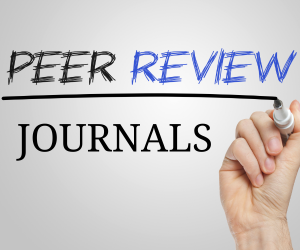CHARACTERISTICS AND MANAGEMENT OF GONORRHEA: A TEN YEARS SYSTEMATIC REVIEW
DOI:
https://doi.org/10.61841/ktmv0524Keywords:
Gonorrhea, characteristic, management, treatment, Neisseria gonorrhoeaeAbstract
Background: Neisseria gonorrhoeae, an obligate human pathogen, is a sexually transmitted disease that causes consequential worldwide morbidity both in resource-abundant and resource-limited nations, and its diagnosis and treatment require costly expenditures annually. Like other sexually transmitted infections (STIs), gonorrhea disproportionately impacts young adult populations.
The aim: The aim of this study to show about characteristics and management of gonorrhea.
Methods: By the Preferred Reporting Items for Systematic Review and Meta-Analysis (PRISMA) 2020, this study was able to show that it met all of the requirements. This search approach, publications that came out between 2014 and 2024 were taken into account. Several different online reference sources, like Pubmed, SagePub, and Google Scholar were used to do this. It was decided not to take into account review pieces, works that had already been published, or works that were only half done.
Result: In the PubMed database, the results of our search get 51 articles, whereas the results of our search on SagePub get 551 articles, on Google Scholar 2410 articles. Records remove before screening are 1219, so we get 1793 articles fos screening. After we screened based on record exclude, we compiled a total of 12 papers. We included five research that met the criteria.
Conclusion: The management of N. gonorrhoeae infections was compromised by a low rate of examining sexual partners, females and testing extragenital specimens, screening for HIV, compliance to follow-up visits, access to nucleic acid amplification tests, and receiving questionable or even obsolete antimicrobial treatment. Therefore, more accurate and comprehensive management of gonorrhea is urgently needed.
References
Piszczek J, St. Jean R, Khaliq Y. Gonorrhea: Treatment update for an increasingly resistant organism. Can Pharm J. 2015;148(2):82–9.
Van Ommen CE, Malleson S, Grennan T. A practical approach to the diagnosis and management of chlamydia and gonorrhea. C Can Med Assoc J. 2023;195(24):E844–9.
Cyr SS, Barbee L, Workowski KA, Bachmann LH, Pham C, Schlanger K. CDC STI Gonorrhea Treatment Guidelines. Morb Mortal Wkly Rep Updat. 2020;69(50):1911–6.
Suay-García B, Pérez-Gracia MT. Neisseria gonorrhoeae infections. Pathogens. 2020;9(8):1–3.
Mahapure K, Singh A. A Review of Recent Advances in Our Understanding of Neisseria gonorrhoeae. Cureus. 2023;15(Cdc).
Kirkcaldy RD, Weston E, Segurado AC, Hughes G, States U, Service NI, et al. HHS Public Access. 2020;16(5):401–11.
Boiko I, Akimova V, Mazur L, Savchenko I, Kohut I, Krynytska I. The Clinico-Epidemiological Profile of Patients with Gonorrhoea and Challenges in the Management of Neisseria gonorrhoeae Infection in an STI clinic, Ternopil, Ukraine (2013-2018). J Med Life. 2020;13(1):75–81.
Budkaew J, Chumworathayi B, Pientong C, Ekalaksananan T. Prevalence and factors associated with gonorrhea infection with respect to anatomic distributions among men who have sex with men. PLoS One. 2019;14(4):1– 19.
Findlater L, Mohammed H, Gobin M, Fifer H, Ross J, Geffen Obregon O, et al. Developing a model to predict individualised treatment for gonorrhoea: A modelling study. BMJ Open. 2021;11(6):1–13.
Yeshanew AG, Geremew RA. Neisseria Gonorrhoae and their antimicrobial susceptibility patterns among symptomatic patients from Gondar town, north West Ethiopia. Antimicrob Resist Infect Control. 2018;7(1):1–7.
Yaesoubi R, Cohen T, Hsu K, Gift TL, Chesson H, Salomon JA, et al. Adaptive guidelines for the treatment of gonorrhea to increase the effective life span of antibiotics among men who have sex with men in the United States: A mathematical modeling study. PLoS Med [Internet]. 2020;17(4):1–13. Available from: http://dx.doi.org/10.1371/journal.pmed.1003077
Pogany L, Romanowski B, Robinson J, Gale-Rowe M, Latham-Carmanico C, Weir C, et al. Management of gonococcal infection among adults and youth: New key recommendations. Can Fam Physician [Internet]. 2015;61(10):869–73, e451-6. Available from: http://www.ncbi.nlm.nih.gov/pubmed/26472793%5Cnhttp://www.pubmedcentral.nih.gov/articlerender.fcgi?art id=PMC4607331
Man REK, Fenwick EK, Sabanayagam C, Li LJ, Tey CS, Soon HJT, et al. Differential impact of unilateral and bilateral classifications of diabetic retinopathy and diabetic macular edema on vision-related quality of life. Investig Ophthalmol Vis Sci. 2016;57(11):4655–60.
Creighton S. Gonorrhoea. BMJ Clin Evid. 2014;2014(September 2013):1–12.
Quillin SJ, Seifert HS. Neisseria gonorrhoeae host adaptation and pathogenesis. Nat Rev Microbiol. 2018;16(4):226–40.
Raccagni AR, Ranzenigo M, Bruzzesi E, Maci C, Castagna A, Nozza S. Neisseria gonorrhoeae Antimicrobial Resistance: The Future of Antibiotic Therapy. J Clin Med. 2023;12(24).
Unemo M. Current and future antimicrobial treatment of gonorrhoea - the rapidly evolving Neisseria gonorrhoeae continues to challenge. BMC Infect Dis [Internet]. 2015;15(1). Available from: http://dx.doi.org/10.1186/s12879-015-1029-2
Downloads
Published
Issue
Section
License

This work is licensed under a Creative Commons Attribution 4.0 International License.
Licensing
Ninety Nine Publication publishes articles under the Creative Commons Attribution 4.0 International License (CC BY 4.0). This licensing allows for any use of the work, provided the original author(s) and source are credited, thereby facilitating the free exchange and use of research for the advancement of knowledge.
Detailed Licensing Terms
Attribution (BY): Users must give appropriate credit, provide a link to the license, and indicate if changes were made. Users may do so in any reasonable manner, but not in any way that suggests the licensor endorses them or their use.
No Additional Restrictions: Users may not apply legal terms or technological measures that legally restrict others from doing anything the license permits.





